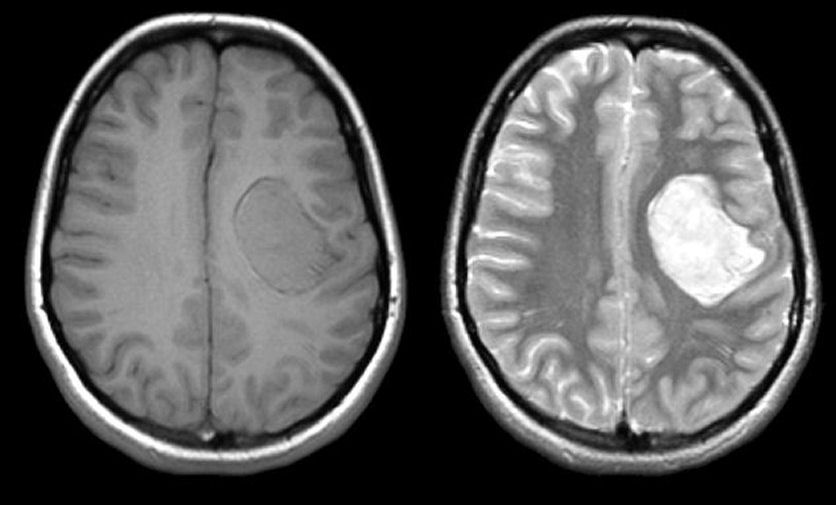
|
A 25 year-old man presented with a headache, vomiting, aphasia and a right hemiparesis. |

![]()
![]()
![]()
![]()
| Hyperacute Intracerebral Hemorrhage: (Left) T1-weighted
axial MRI; (Right) T2-weighted axial MRI. Note on the T1-weighted
scan there is an abnormality in the left posterior frontal lobe that
is slightly hypointense. The same
area is hyperintense on the T2-weighted scan. If one looks closely at the T1- and T2-weighted
images, one can make out a very thin dark rim around the lesion. On
the T2-weighted scan, one can also discern the surrounding edema, which is bright,
and distinct from the underlying hemorrhage, which is also bright on T2-weighted
images. This is the characteristic picture of a hyperacute (approximately 1 day old) hemorrhage on MRI. In the hyperacute stage, intracellular oxyhemoglobin is isointense / hypointense on T1-weighted and isointense / hyperintense on T2-weighted scans. As oxyhemoglobin changes to deoxyhemoglobin, the signal turns dark both on T1- and T2-weighted scans. This occurs first at the periphery. This process can be seen just beginning to occur on both images. In this case, a subsequent angiogram showed the bleeding source to be a small arteriovenous malformation in the left frontal lobe. The findings of blood on MRI are complex and depend on timing. To learn more, review the powerpoint slide show, Blood on MRI: Time-dependent Changes. |
Revised
11/30/06.
Copyrighted 2006. David C Preston.